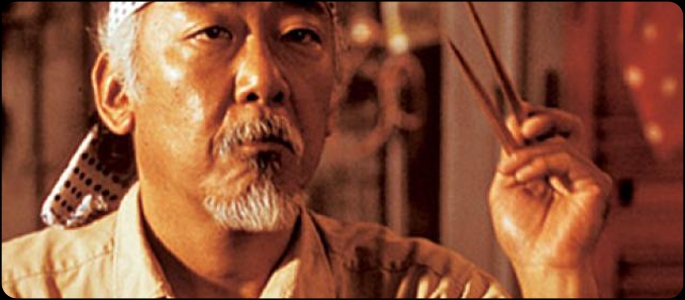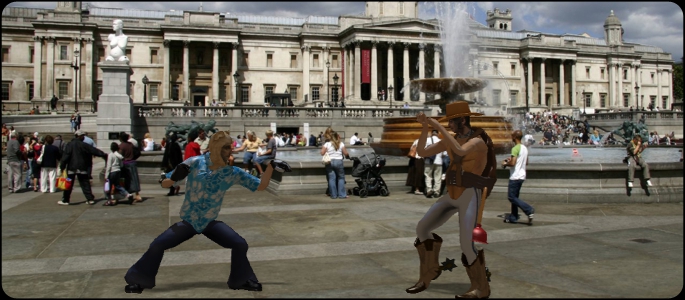Coming up to the Vita’s release, Sony made some bold statements about the importance of augmented reality games for their handheld. Leading the pack is an AR fighting game from Invizimals developer Novarama. But is reality really better augmented, or should gamers stick to the digital world we’re used to?
When you first try out Reality Fighters and battle another member of the Village People on your table, out on the street, or on the floor, you’ll be impressed by how quickly and easily you can set it up and how the character’s do look like they are standing on the surface you point at. You don’t even have to use the easy to lose AR cards, although using them increases accuracy.
Unfortunately, that’s where the fun ends – as a fighting game, Reality Fighters is sorely lacking. Combo chains won’t satisfy anyone but the most casual gamer, character’s fighting styles vary only slightly, and the L1 button bizarrely takes screenshots (you can do that already), completely wasting an important button. What’s worse is that nearly the entire singleplayer campaign can be beaten simply by hitting the triangle button and forward.
The campaign is surprisingly long, so you can get quite a bit of triangle action in while Mr. Miyagi – yes that’s his actual name – teaches you the ropes and introduces you to his previous students. The plot – which, like most fighters, is very thin – is about you going to Mr. Miyagi and asking for his training, only for him to make you beat his students before he takes note. Considering how easy his students are to defeat, why exactly you’d want his training is beyond me.

Along with the campaign, there’s quick play, time attack or survival. Quick play and survival modes are what you’d expect, but time attack has you hitting as many wooden barrels, chests or cupboards as possible in 60 seconds – which is about as riveting as it sounds.
Whichever mode you decide to play, you can choose your background and setting. You can play in the real world, with the fighter overlaid onto the background that the Vita camera picks up, or you can use one of the in-game backgrounds. These include places like Central Park, the Taj Mahal or Shangqiu, China, all of which are completely static and sterile, basically just photographs that have a nice location. You can actually take several photographs to make your own static background, with limited success. One problem with most of the static backgrounds and real-life settings is that the edge of the arena is impossible to distinguish from its surroundings, as there’s no digital wall or fence to let you know “the game ends here”, it’s just an invisible block.
You unlock more static backgrounds by playing through the game and gold-starring time attacks. You also unlock more costumes, body types and weapons, which are a nice frivolity, but almost completely pointless. To make your character look more like you, your singleplayer character is also required to use the Vita’s front or back camera to take a photograph of your own face to use on the fighter, something that, if done right, can look decent, but requires a lot of tweaking.
All in all, Reality Fighters has its fun moments, and showing off the AR fighting to a technophobe can be enjoyable, but you will tire of the game incredibly quickly after you realize just how simple the fighting mechanics are, and how little depth the game has. Novarama have done a good job with augmented reality but, for a fully priced game, have failed to create a compelling fighting game that can even to hope to compete with the multitude of finely tuned and incredibly polished fighting franchises out there, many of which are coming to the Vita.
PlayStation LifeStyle’s Final Score
– Button bashing is too easy – Little variety |
 |
–








